Tokina atx 2470mm F28 Pro Fx Vs Sigma 2470 Art
For the provided lens Tokina SD 24-70 F2.eight (IF) FX AT-X PRO Aspherical many thanks to the store Bomber, where tin I find studio light, lite filters and whatsoever lens, including Tokina with an official guarantee of 12 months.
Browse Navigation:
- Browse Navigation
- In short
- History
- Chief Specifications
- Assembly
- Focusing
- Diaphragm
- Paradigm quality
- Sample Photos
- Alternatives
- My experience (a chip of nostalgia)
- Prices / where to buy
- Video review
- Results
- User Comments
- Add your review or question on the lens
This review presents the Tokina SD 24-70 F2.8 (IF) FX AT-10 PRO Aspherical (Northward / AIS) lens for Nikon cameras. In brusque, I volition call it Tokina 24-70 / two.8 AT-X PRO.
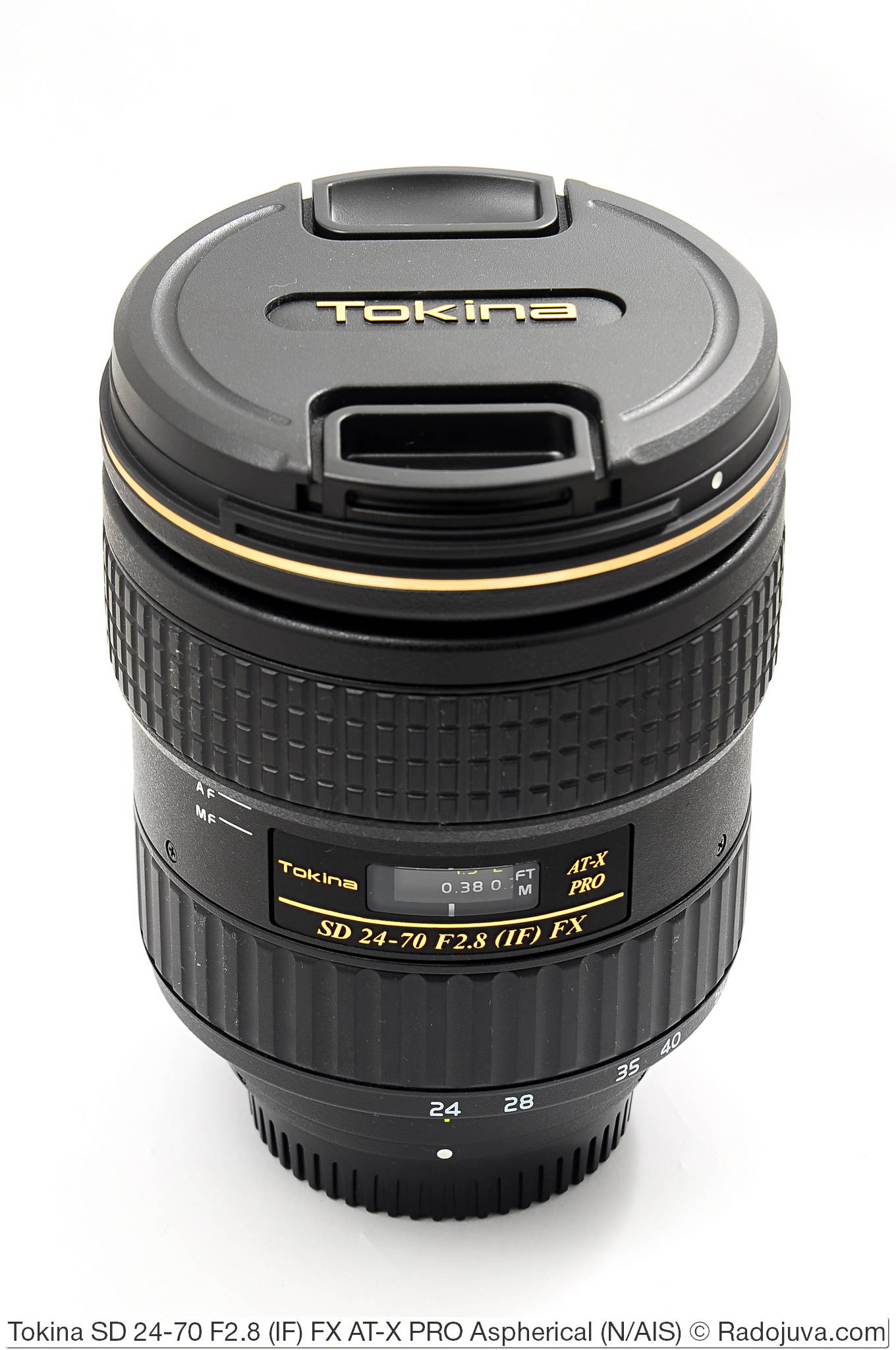
Tokina SD 24-70 F2.viii (IF) FX AT-X PRO Aspherical. View shown with front end and back covers.
In short
The Tokina 24-70 / 2.viii AT-X PRO is a fast, versatile zoom lens for full frame cameras. Lens deserves due attention. Good replacement for an older model Tokina AT-X 280AF PRO. The lens is good / most very good optically, simply it has its ain characteristics with focus and ease of utilize.
During my exercise as a photographer, I came to the conclusion that living without a good universal lens is very difficult. Every bit one colleague of mine put information technology, 'all paths lead to 24-70'. In the life of a large number of photographers, in their piece of work, almost always the well-nigh convenient solution for many types of photography volition be such a 'workhorse'. 24-70 is a kind of working base, to which other lenses are already added depending on the tasks to be solved.
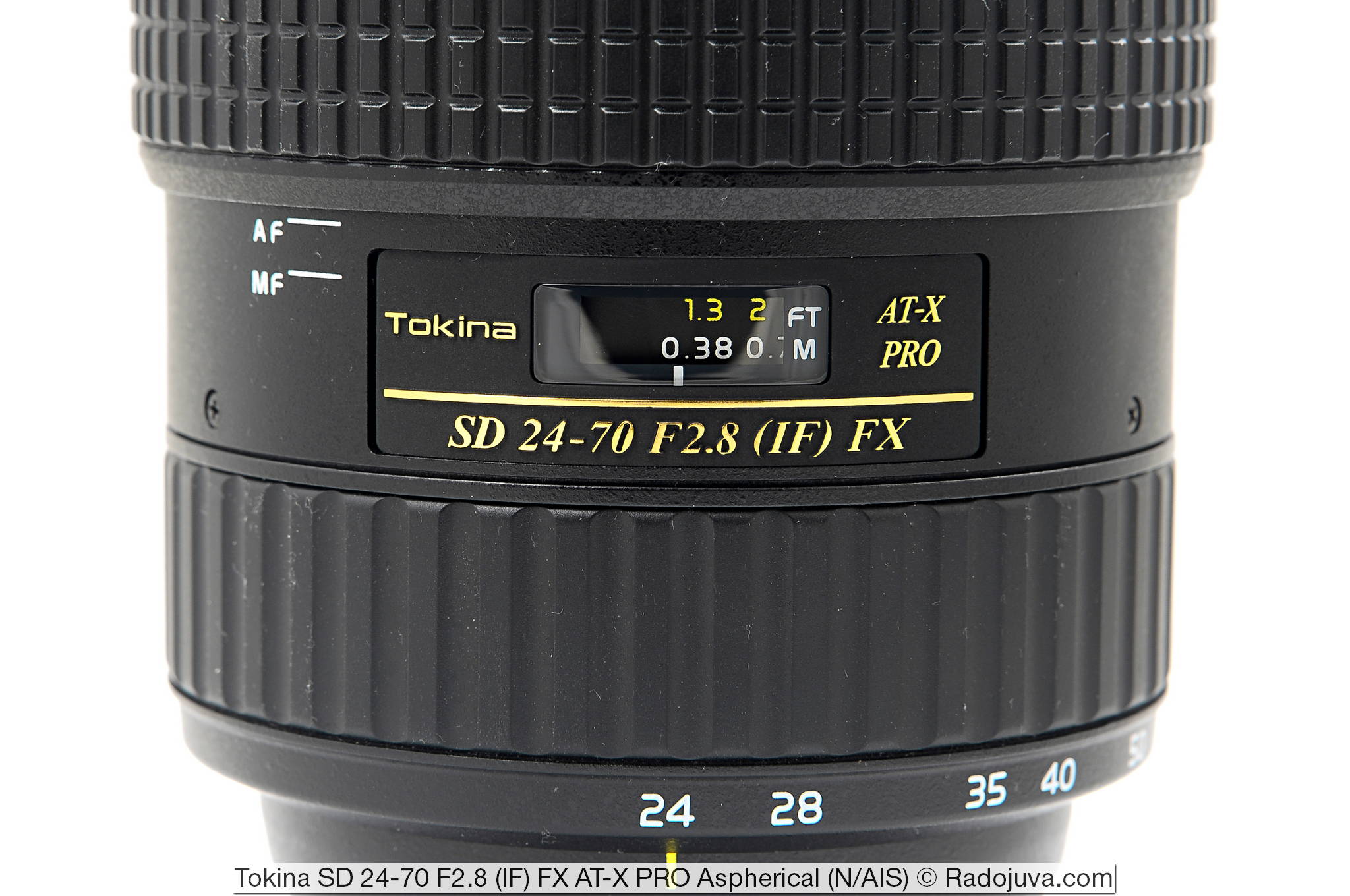
Tokina SD 24-70 F2.eight (IF) FX Tokina SD 24-70 F2.8 (IF) FX AT-X PRO Aspherical-Ten PRO Aspherical
History
The predecessor of Tokina'south line of discontinuity universal zoom lenses was the lens Angenieux Zoom F.28-lxx 1:2.6 AF, (the name is indicated co-ordinate to the inscription near the front end lens, versions only for Nikon F, Minolta / Sony A). Subsequently, the line has grown and has several models.
The evolution of Tokina Course 24 (28) -seventy (80) /two.8 (ii.6-2.8) lenses:
- Tokina AT-X AF 28-70mm 1: two.eight - orange border almost the front end lens, filter bore 72 mm, focusing is non internal. Window focusing distances. The name on the box is Tokina AT-X 270 AF.
- Tokina AT-X PRO AF 28-70mm 1: two.6-2.8 (1: 2.eight) - marking '1: 2.8' for Japan, marking 'i: 2.6-ii.8' for other countries, filter diameter 77 mm, internal focusing. The hood is threaded. Without a window of focusing distances, a golden edge near the forepart lens. The name on the box is Tokina AT-X 270 AF PRO. You can distinguish on these signs of.
- Tokina AT-X PRO 28-70mm i: ii.half dozen-2.viii (1: 2.8) - marker 'i: ii.viii' for Japan, marker '1: 2.6-2.8' for other countries, filter diameter 77 mm. Externally similar to the previous version, but in that location is no 'Tokina' lettering well-nigh the front lens, and the hood is bayonet blazon. The version is ordinarily referred to every bit 'AT-X PRO II'. Proper name on the box Tokina AT-X 270 AF PRO Two. You lot tin distinguish on these signs of.
- Tokina AT-10 PRO 28-eighty one: 2.8 Aspherical - a window of a focus calibration, a gold edge about the front lens. The proper name on the box is Tokina AT-X 280 AF PRO. There is a subversion with a golden nameplate with the name of the lens and other enlightenment.
- Tokina AT-Ten PRO SV 28-70mm 1: ii.8 (also called Tokina AT-10 287 PRO SV) - easily recognized by the 'PRO SV' prefix. Name on the box Tokina AT-X 287 AF PRO SV.
- Tokina SD 24-70 F2.eight (IF) FX AT-X PRO Aspherical - like shooting fish in a barrel to notice by focal lengths. Has a built-in focus motor. Name on the box Tokina AT-X 24 ~ 70mm F2.8 PRO FX
As indicated in a higher place, the versions of Tokina AT-X 270 AF PRO and Tokina AT-X 270 AF PRO Ii exist in two versions: 'ane: ii.eight' and 'one: 2.6-2.eight' and are quite similar to each other. The easiest way to distinguish between 'PRO' and 'PRO II' is by the inscription 'TOKINA' almost the front lens and the presence of fasteners for the bayonet hood:

All options are 28-70 AT-X PRO. Click to overstate.
It is worth remembering about Angenieux Zoom F.28-70 1:2.6 AF, which is the progenitor for some models from the list above.
Since the release of the unsuccessful version of the Tokina AT-X 287 AF PRO SV (2002), Tokina has non updated its line of professional station wagons for 13 years. Only in Dec 2015 was the new Tokina 24-70 / ii.8 AT-10 PRO lens shown.
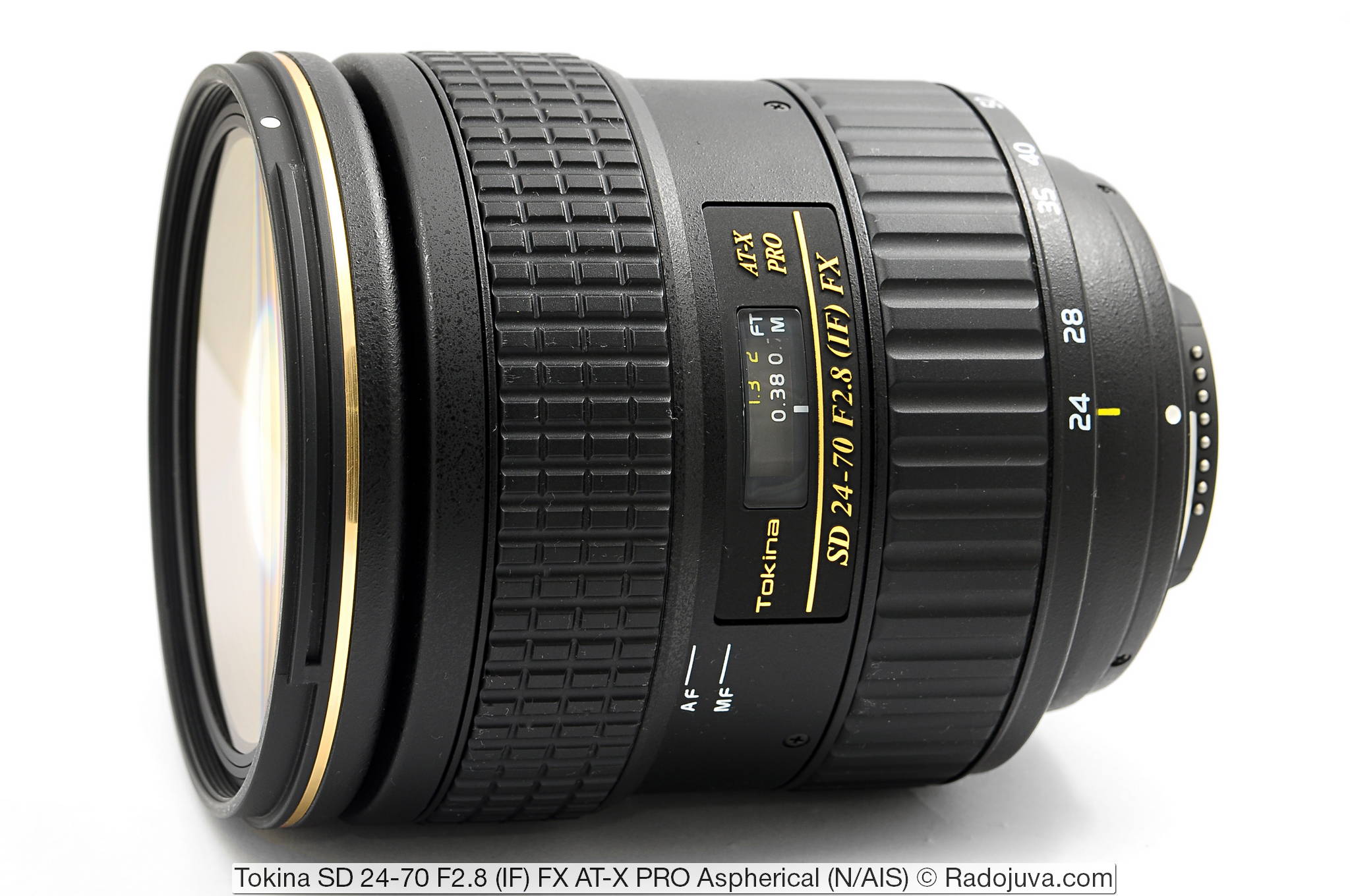
Tokina SD 24-lxx F2.8 (IF) FX AT-X PRO Aspherical
Main technical characteristics of Tokina SD 24-70 F2.8 (IF) FX AT-Ten PRO Aspherical (version Northward / AIS):
| Review Example Name | The lens indicates:Tokina SD 24-70 F2.eight (IF) FX AT-X PRO (in aureate letters) N / AIS (bayonet side)Aspherical Japan CE Ø82 (in white messages). The box indicates: AT-10 24 ~ 70mm F2.8 PRO FX (Due north / Digital to fit Nikon) |
| Basic backdrop |
|
| Front Filter Diameter | 82 mm plastic thread |
| Focal length | 24-70 mm, EGF for Nikon DX cameras is 36-105 mm |
| Diagonal viewing angle | 84° for 24 mm, 34° for 70 mm |
| Zoom ratio | 2.92X (often rounded to 3X) |
| Designed by | for digital total-length cameras Nikon FX. Also, there is a version for Canon EOS cameras (run across). |
| Number of aperture blades | 9 petals, petals rounded |
| Tags | window with focusing altitude in meters and feet, focal lengths for 24, 28, 35, 40, 50, 70 mm, bayonet mount marking, hood mount mark. |
| Diaphragm | From F / 2.8 to F / 22 over the entire range of focal lengths. The lens does not take an aperture band (Grand - lens type). |
| MDF (minimum focusing distance) | 0.38 m over the entire range of focal lengths, the maximum magnification ratio is achieved by 70 mm focal length and is one: 4.73. |
| The weight | 1010 thousand (!) |
| Optical design | 15 elements in 11 groups. The scheme includes:
|
| Lens hood | plastic, marking: BH-822 bayonet type with the power to install in the opposite direction and a velvet inner surface |
| Manufacturer country | Japan (Nihon) |
| Period | Dec 2015 |
| Instructions | Encounter |
| Video about the lens | Run across |
| Price |
|
The total number of special items is 5, not 6 (three AS + iii SD). A good review of the version for Catechism EOS cameras can exist seen hither.

Tokina SD 24-lxx F2.8 (IF) FX AT-X PRO Aspherical
Assembly
I was given a completely new lens for review. Build quality - at a very high leveltypical of the Tokina AT-X PRO serial lens. Tokina 24-seventy / 2.8 AT-X PRO design reminded me of an one-time 'fat homo' Nikon 28-70 /2.8D.
Tokina 24-70 / 2.8 AT-X PRO has metallic bayonet mount. The zoom and zoom rings are rubberized and wide enough. Zoom ring rotates tight and uncomfortable. When changing the focal length, the front lens does not rotate. The retractable frame of the body (trunk) consists of 1 department. The trunk of the lens behaves unusually: in the range of 24-twoscore, its elongation practically does not occur, but in the range of 40-70 information technology begins to protrude in total.
Near the mount is rubber compressor, protective mount against dust and moisture. There is no exact information almost the security of the lens.
At that place is a bayonet mount mark on the trunk and a marking for quick installation of the hood. The lens uses a plastic hood that is fixed in special slots located nearly the front lens of the lens. The hood tin be installed in the contrary management for transportation. In this position, admission to the zoom band is a fiddling hard. When the focal length is changed, the hood moves with the front of the lens. Of the pleasant little things - the inside of the hood is covered with a special cloth which is most likely designed to capture dust.
When changing the focal length, the rear lens moves in the middle of the lens torso like a pump - it draws in and pushes out air. This behavior of the rear lens is chosen 'vacuum cleaner event', which can increase the amount of dust that accumulates in the camera. For Tokina 24-70 / ii.8 AT-X PRO, the effect of a vacuum cleaner is weakly expressed.
Green boards and control loops are visible from the bayonet side - an unpleasant cosmetic trifle for a Top lens.
Separately, I want to notation the big weight of the lens. it one of the heaviest modern lenses of today. At the time of writing, Tokina 24-seventy / ii.8 AT-Ten PRO was just heavier Nikon AF-S Nikkor 24-lxx mm i: 2.8EN ED Nano Crystal Coat SWM IF Aspherica VR.
I shot a small ii-hour report from a children's birthday on Tokina 24-70 / 2.8 AT-X PRO and a small studio set. The lens pushed away from itself with its excessive weight. I frequently shoot on light Tamron SP 28-75 / 2.eight A09 and after fatties like Tokina 24-lxx / two.8 AT-X PRO, I'm starting to appreciate a little more than weight. In addition, the Tokina 24-lxx / ii.8 AT-X PRO's tight / very tight / tight enough focus ring, located too shut to the photographic camera'south mount, causes extra discomfort. It would be great if the zoom and focus rings were swapped, for instance, similar Tamron USD DI SP 24-70 mm F / 2.viii vc.
Compared to original Nikkor lenses, with the same Nikon 24-70 mm 1: 2.8E VR, the zoom and focus rings of the Tokina 24-seventy / 2.8 AT-X PRO rotate in the opposite direction, which should take some getting used to. But Canon users will exist more familiar. By the manner, Sigma has recently been releasing versions of lenses for Nikon and Canon with the original directions of rotation of the zoom / focus rings.

Tokina SD 24-70 F2.8 (IF) FX AT-10 PRO Aspherical. Maximum frame length
Focusing
Tokina 24-70 / two.8 AT-X PRO uses Tokina built-in quiet focusing motor SDM (Southwardilent Drive-Chiliadodule). Tokina 24-seventy / two.8 AT-Ten PRO - Tokina's first lens with motor blazon SDM.
Important: this lens will automatically focus on all Nikon DSLR cameras. Tokina 24-70 / ii.viii AT-X PRO is an analog of the Nikon serial lenses AF-S / AF-I, Nikon SWM.
Despite the claims that the focusing motor is silent, quite a lot of dissonance. This racket will greatly affect the sound quality during movie shooting using the microphone built into the camera. Unlike other similar lenses that use advanced ultrasonic focusing motors (e.g. ring SWM Nikon), the motor in the Tokina 24-70 / 2.8 AT-Ten PRO lens is more than like regular buzzing micro-motors.
A flake of stones in the Tokina garden: I prepared this review at the end of 2016, at that moment Tokina had only 1 (one) lens with an ultrasonic focusing motor, and that ane has already been discontinued. This is near Tokina VCM-Southward AT-X PRO SD lxx-200 F4 (IF) FX. Tokina most likely has some kind of patent or liability problem.
Automobile focus speed medium (closer to low). The focusing speed does non depend on the selected focal length or on the orientation of the lens. The lens travel time from infinity to MDF roughly corresponds to the fourth dimension of cheap modern universal lenses. Unfortunately, all other original professional high-aperture zoom lenses focus faster than the Tokina 24-lxx / 2.viii AT-X PRO.
Tokina 24-lxx / 2.8 AT-X PRO has a special Tokin focus mode switch FC (ane-touch Focus Clutch - one-touch focus fashion switch). The switch is quite convenient. To switch between focusing modes, but pull the focusing ring towards the mount or forepart lens. But I desire to bespeak out that other modern lenses have more familiar focus mode switches that let for continuous manual focus control.
When used on a photographic camera Nikon D90 (with unpretentious Multi-CAM m focusing system), as well as on the photographic camera Nikon D70 (with super-simple Multi-CAM 900 focusing system), the lens showed itself worse than expected. Tokina 24-seventy / two.eight AT-10 PRO misses in focus, misses are not systematic and practice not depend on the focal length or focus mode settings (AF-A, AF-S, AF-C). The number of misses is higher than many similar lenses... Focus grip is weak, even for stationary / sedentary subjects. In AF-S focus way, the lens can focus on the subject for a long time. In atmospheric condition with poor illumination, due to focusing misses, 100-150 frames out of chiliad took me to the handbasket. For example, with a similar lens Tamron SP 28-75 / two.8 A09 (first version, without a congenital-in motor) of m frames, misses occur at 10-20 frames.
On camera Nikon D90 I checked the presence of the back and focus front at different focusing distances and different values of the focal length (infinity and MDF every bit well). Pictures taken using the Live View mode (which does not suffer from dorsum / front end focus) were used as a mensurate. Focusing accuracy using phase sensors completely coincided with the Live View style.
Important: according to other users' feedback on the Canon system, the lens behaves improve. Information technology is besides possible that the tenacity of focus volition very much depend on the camera used.
During focusing, the front end and rear lenses remain stationary, equally the lens uses internal focusthat is indicated on the case past the letters'(IF)'-'Iinternal Focus' - 'Inner Focus'. You lot can easily employ any filters, for example polarizing or gradient.
During auto focus, the focus ring rotates freely and does not affect the focus process. During automobile focus, information technology'southward user-friendly to support the lens precisely by the focus ring. In transmission focus manner, the focus ring rotates approximately 45 degrees. When extreme positions are reached, the focus ring abuts. Manual focus is not very user-friendly.
The lens has a window with a altitude calibration with marks in meters and feet. The scale is modest, on it there are marks only for 2, 1.ii, 0.7, 0.38 m and the marker is 'infinity'. Such a scale in itself is of fiddling use and is present more for show (justification of this thought hither).
The minimum focusing altitude is 38 cm (the distance from the sensor / focal plane of the camera to the field of study). With such an MDF, the maximum magnification ratio is 1: four.73.
Features:
- During the tests, a small-scale focus shift (shift-focus). During discontinuity, the exact focus moves away from the lens.
- There is the result of 'Focus Breathing' (changes in viewing angle during focusing).
- Tokina 24-lxx / 2.8 AT-Ten PRO is a third-party lens. It may happen that information technology volition not piece of work correctly with some Nikon cameras. Details on this event are considered by me. here.
- Tokina 24-70 / 2.8 AT-10 PRO has no special focus problems in Live View (tested on Nikon D90) Although some users of the versions for Canon cameras note a strong retardation of the lens in Live View.
- When changing the focal length, focusing is a bit confused.
- Tokina 24-70 / 2.eight AT-Ten PRO transmits the focus altitude to the subject in the photographic camera and is a blazon lens Nikon D.
- The lens does non accept a hard stop (difficult infinity mechanical stop) which allows you to accurately and quickly focus the lens to infinity under whatsoever external temperature conditions.
- At 70 mm of the focal length, while focusing on the MDF, the distance from the front lens of the lens to the field of study is about 20 cm, if y'all shoot 'macro objects' located on a horizontal surface, when focusing at the smallest possible altitude, y'all can claw this very surface.
- There is no depth of field scale and labels for working in the infrared spectrum.
- Unknown compatibility with teleconverters.

Tokina SD 24-70 F2.eight (IF) FX AT-Ten PRO Aspherical with hood
Diaphragm
The diaphragm consists of ix rounded petals. The lens does non have an aperture control ring and is like to Nikon lenses One thousand. The issue of an 18-ray star with this lens is difficult to obtain.

Tokina SD 24-70 F2.8 (IF) FX AT-X PRO Aspherical with hood in transport fashion
Image quality
Unfortunately, I did not take the opportunity to bulldoze the lens on a full-format camera, but on cropped cameras with an APS-C sensor, the lens behaves very well.
The main advantages of the created image:
- practiced dissimilarity over the entire range of focal lengths
- expert sharpness at open up apertures over the entire range of focal lengths
- first-class sharpness on covered apertures throughout the image field
- fifty-fifty circles in the mistiness zone due to the rounded discontinuity blades (case on f / 5)
- low level of refrigeration (chromatic aberrations out of focus)
- no vignetting on cameras with APS-C sensor
- elementary and 'apartment / boring' bokeh (for a station wagon, more than plus than minus)
The primary disadvantages of the image:
- slight distortion over the entire range of focal lengths; distortion changes its character depending on the focal length
- in backlight information technology can create more unpleasant glare (Example 1, Example 2, Instance iii, greenish glare, shot without filter)
- bulbous bokeh (exampleconcentric circles)
- unpleasant light-green-yellow color of the freezing in the blur zone behind the subject
Nikon modern cameras tin automatically correct some of the shortcomings of modern original lenses, such every bit vignetting, baloney, chromatic aberration etc., in the instance of Tokina 24-70 / 2.8 AT-X PRO, you will have to use third-political party software (or not) to remove some distortions. This is critical for shooting in format. JPEG or tiff. When shooting in RAW format, some of these shortcomings can be easily eliminated in near modern RAW converters. At that place are profiles for Tokina 24-seventy / 2.viii AT-X PRO for popular handler programs.
Sample Photos
Pictures from Nikon D90 и Nikon D70. The photos in the gallery below are shown without processing, the conversion of the source RAW files by the original Nikon ViewNX-i utility without making boosted adjustments.
Everything got away with a hood and protective light filter Hoya Hard disk drive UV 82mm Made in Japan. I was asked to say a few words about this filter: I like the filter line Hoya HD (The Loftier End Series)Proficient filters at a reasonable cost.
Yous can download the original photos in RAW format (.NEF) at this link. With easy handling here.
My experience or a little nostalgia
I really similar the Tokina ATX-PRO line of lenses, they accept their ain highlight. In some small things, the new version of Tokina 24-lxx / ii.eight AT-10 PRO, compared with the onetime version Tokina AT-X 280AF PROlost office of her amuse. The new version lacks internal zoom: the extended torso of the Tokina 24-lxx / 2.8 AT-X PRO does not look every bit squeamish every bit the monolithic body Tokina AT-X 280AF PRO... The old version always stood out for its longer focal length of 80mm, which brought it closer to the archetype portraits with a focal length of 85mm. Older versions - Tokina AT-X 270 AF PRO and Tokina AT-X 270 AF PRO II could be found with the i: 2.6-two.eight markings, which warmed the soul of many photographers, considering the F / 2.half dozen value at the wide finish already set the lens out of gray the crowd of classic 1: two.8. In addition, the focusing ring travel of the Tokina 24-70 / 2.8 AT-X PRO has halved - instead of ninety degrees in Tokina AT-Ten 280AF PRO information technology was only 45 degrees in the Tokina 24-70 / 2.8 AT-X PRO. And the old version had its own proper noun: '280th Tokina' (tokina AT-X 280AF PRO), the new lens is 'unnamed', only with marking of the focal length, relative discontinuity and other regalia. You can still feel cornball about the 'Tokin software', but that'south a completely different story.
Despite its novelty, the Tokina 24-70 / 2.8 AT-X PRO is still lagged behind its competitors: the lens uses an primitive micro-motor for focusing with not fast focusing (but in fact, nigh slow), does not accept an image stabilizer, uses an onetime focusing mechanism without constant transmission control, there is no authentic information on the lens protection (which ways it is not protected), and etc.
For real photography without unnecessary troubles (took and went to 'bomb'), I recommend looking towards the divine Catechism 24-seventy / 2.eight L IIbalanced / stabilized Tamron 24-70 / ii.viii VC or super-heavy Nikon AF-South Nikkor 24-70 / 2.8E VR. Perhaps new Sigma 24-70 / 2.8 ART many will like information technology.
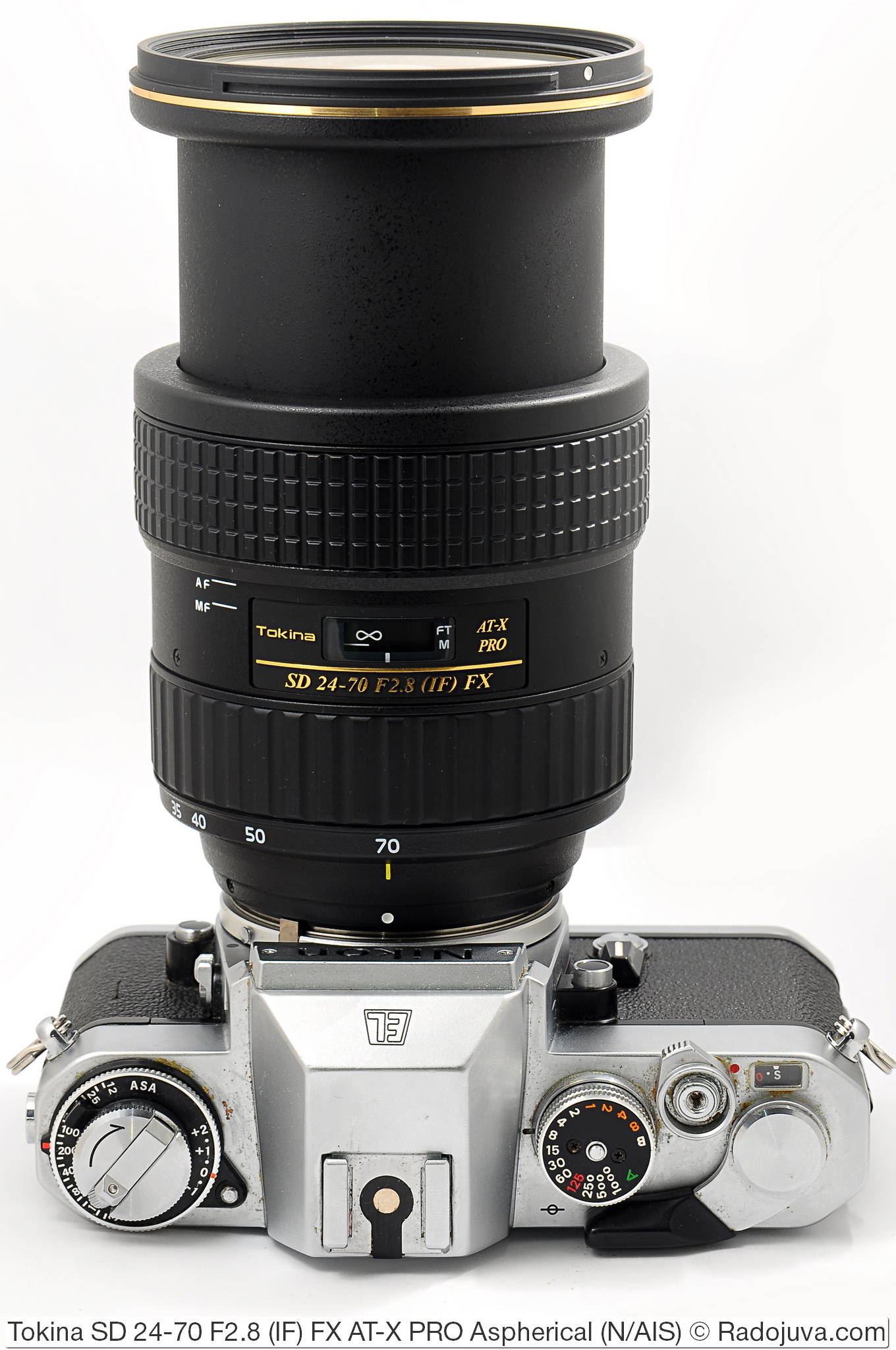
Tokina SD 24-lxx F2.8 (IF) FX AT-X PRO Aspherical. The lens is shown in flick slr photographic camera Nikon EL2.
Alternatives
Professional fast wagon
Choosing a adept high-speed universal lens is one of the most important for a big number of photographers. I pay a lot of attention to this issue, because I prepared this list of all full-frame universal (standard range of focal lengths) fast autofocus lenses:
Canon
Bayonet EF:
- Catechism Zoom Lens EF 28-seventy mm i: 2.eight L USM
- Catechism Zoom Lens EF 24-lxx mm 1: two.8 50 USM
- Canon Zoom Lens EF 24-lxx mm i: ii.8 Fifty 2 USM
Bayonet R:
- Canon Lens RF 28-lxx mm F2 L USM, since September 2018
- Catechism Lens RF 24-70 mm F2.8L IS USMsince Baronial 2019
Nikon
Bayonet F:
- Nikon AF Nikkor 35-70 mm 1: 2.viii (MKI)
- Nikon AF Nikkor 35-70 mm 1: ii.8D (MKII)
- Nikon AF-S Nikkor 28-70 mm 1: 2.8D ED SWM (two torso color options)
- Nikon AF-S Nikkor 24-seventy mm 1: 2.8GN ED Nano Crystal Coat SWM IF Asphericalsince December 2007
- Nikon AF-S Nikkor 24-70 mm 1: 2.8EN ED Nano Crystal Coat SWM IF Aspherical VR
Bayonet Z:
- Nikon Nikkor Z 24-70 mm one: 2.viii Southward
- Nikon Nikkor Z 28-75 mm 1:2.8 (the scheme is like to Tamron a036, blitheness)
Tokina (for dissimilar mounts)
- Tokina AT-XAF 28-70 mm 1: ii.8 (Tokina AT-Ten 270 AF)
- Tokina AT-Ten PROAF 28-70 mm one: two.6-ii.8 (or ane: 2.eight, Tokina AT-10 270 AF PRO)
- Tokina AT-Ten PROAF 28-70 mm one: ii.vi-2.8 (or 1: 2.8, Tokina AT-X 270 AF PRO Ii)
- Tokina AT-X PRO 28-80 mm 1: 2.8 Aspherica (Tokina AT-X 280 AF PRO)
- Tokina AT-10 PRO SV 28-lxx mm 1: ii.8 (Tokina AT-X 287 AF PRO SV)
- Tokina sd 24-70 F2.8 (IF) FX AT-Ten PRO Aspherical
Sigma (for different mounts, in chronological lodge)
- Sigma 28-70mm one: 2.eight Zoom, from May 1992 (Vivitar 28-70 / 2.viii VMC was fabricated on its ground)
- Sigma 28-70mm 1: 2.8 Zoom EX Ashperical [+ -D], from the cease 1998
- Sigma 28-seventymm 1: 2.eight Zoom EX Aspherical DF [+ -D]since Feb 2001
- Sigma 24-70mm 1: 2.8 Zoom EX DG Aspherical [+ -D], [DF version], since February 2001
- Sigma 24-60mm i: 2.8 Zoom EX DG [+ -D], from May 2004
- Sigma 24-70mm 1: 2.8 Zoom EX DG Macro [+ -D], From september 2004
- Sigma 28-lxxmm 1: ii.8 Zoom EX DG [+ -D], From september 2004
- Sigma 24-70mm 1: 2.8 EX DG HSM, From september 2008
- Sigma 24-lxxmm 1: 2.8 DG HSM Bone A (Art)since February 2017, Nikon F, Canon EF, Sigma SA
- Sigma 24-seventymm i: two.8 DG DN A (ART)since November 2019, Sony E, Leica 50, the layout is similar to Leica Vario-Elmarit-SL 2.8 / 24-70mm, animation
- Sigma 28-70mm ane: 2.8 DG DN C (Contemporary)since February 2021, Sony E, Leica 50
Tamron (for unlike mounts)
- Tamron SP AF 35-105 mm ane: ii.eight Aspherical Model 65D
- Tamron SP AF Aspherical LD [IF] 28-105 mm 1: 2.8 Model 176D
- Tamron SP AF Aspherical LD [IF] 28-105 mm i: ii.8 Model 276D
- Tamron SP AF Aspherical XR Di LD [IF] 28-75 mm ane: 2.8 Macro Model A09 (Model A09N & Model A09N 2) (scheme like Konica Minolta AF Zoom 28-75mm 1: 2.viii (32) D и Sony two.eight / 28-75 SAM)
- Tamron SP 24-70 mm F / 2.8 DI VC USD Model A007
- Tamron SP 24-seventy mm F / 2.8 Di VC USD G2 Model A032
- Tamron 28-75 mm F / ii.8 Di 3 RXD Model A036, (15/12), just for Sony E / FE, the scheme is similar to Nikon Nikkor Z 28-75 mm ane:two.8, blitheness
- Tamron 28-75 mm F / 2.8 Di 3 VXD G2 Model A063, (17/xv), simply for Sony Eastward / FE, Fall 2021
- Tamron 35-150 mm F / ii-ii.eight Di Three VXD Model A058, Sony E / Iron only, Fall 2021
Sony
Sony / Minolta A mount:
- Konica Minolta AF Zoom 28-75 mm i: 2.8 (32) D (scheme like Tamron 28-75 / two.viii)
- Minolta AF Zoom 28-70 mm one: ii.8 (32) K
- Sony 2.8 /28-75 SAM (scheme like Tamron 28-75 / ii.8)
- Sony Zeiss Vario-Sonnar 2,viii /24-seventy ZA SSM T *
- Sony Zeiss Vario-Sonnar 2,8 /24-seventy ZA SSM Ii T * (diagram from the previous lens)
Sony E-mount:
- Sony Iron 2.8 /24-70 GM (G, SEL2470GM)
- Sony FE ii.viii /24-lxx mm GM 2 (G, SEL2470GM2)
Pentax (M)
- Pentax SMC FA 28-70 mm f / 2.8
- Pentax Hard disk Pentax-D FA 24-70 mm f / 2.8ED SDM WR
Angénieux
- Angenieux Zoom F.28-70 ane: 2.6 AF (for Nikon F, Minolta / Sony A, Canon EF)
Vivitar
- Vivitar Serial 1 28-70mm 1: 2.8 VMC Car FOCUS ZOOM, different mounts, presumably a re-create Sigma 28-70mm 1: 2.8 Zoom
Panasonic
- Panasonic Lumix S PRO i: 2.viii /24-70 mm, from August 2019, Leica Fifty
Leica
-
Leica Vario-Elmarit-SL i: 2.8 / 24-70mm f / two.8 ASPH., from May 2021, the optical design repeats Sigma 24-70mm 1: 2.viii DG DN Art (animation)
Samyang
- Samyang AF 24-70 / ii.viii Iron, aka Rokinon AF 24-70 / 2.eight Fe, from October 2021, only for Sony E / Fe
Prices
Video review
A brief video review can exist viewed on my Youtube channel, here hereor below:
Results
The Tokina 24-70 / ii.8 AT-10 PRO is an optically good / very good lens, but the focusing features make you think carefully earlier buying it. In general, the lens deserves attention.
Fabric prepared Arkady Shapoval... Look for me on Youtube | Facebook | Instagram | Twitter.
Source: https://radojuva.com/en/2016/11/tokina-24-70-fx-sd-at-x-pro/
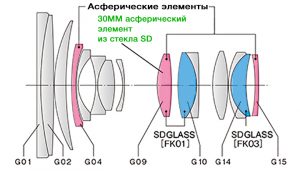 The image of the optical excursion is clickable.
The image of the optical excursion is clickable.
0 Response to "Tokina atx 2470mm F28 Pro Fx Vs Sigma 2470 Art"
Post a Comment